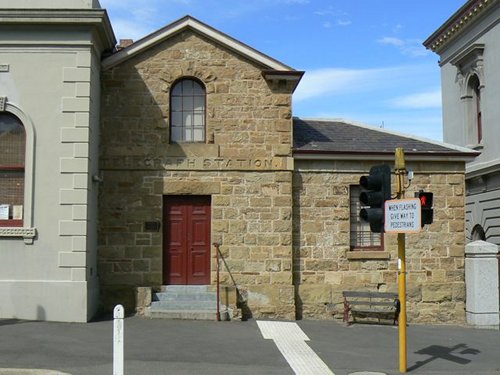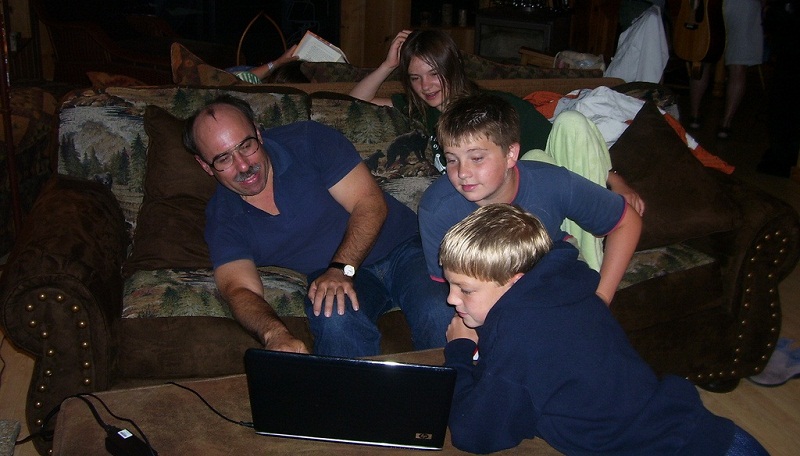Getting started with your Zahmoo story-bank
You’ve decided you want to use Zahmoo as your story-bank. But how do you get started? Here’s how.
Go to the Zahmoo website, and perhaps first browse around the three focus-areas:
As we’ll see in a moment, these focus-areas also represent different account-plans – different levels and capabilities for your Zahmoo story-bank.
To start creating your account, click on the Sign up link at the top-centre of any page, or the ‘Sign up’ button at the base of the page for any of those Family, Community or Business focus-areas.
This takes you to the Plans page, where you choose which account-plan you want to start with. (You can change to a different plan later if need be.) The accounts-plans differ on:
- members – number of people who can add or edit the stories in your story-bank
- collections – number of separate groups or categories of stories (in addition to any number of search-tags that you can attach to stories)
- storage – storage-space for stories (usually not relevant for text-stories, but important if you’re going to store stories as audio or video)
Click on the Sign up button for the respective plan.
The sign-up is in two parts, both on the same overall form: creating your account, and creating your story-bank.
To create your account is straightforward. There are five fields you’ll need to fill in, for your forename and surname, your email-address, and your password. Type the same password again in the ‘Confirm password’ field so that the system can verify the password.
(We recommend to use a password that is easy to remember but hard to guess: three random words separated by hyphens works well for this, or the usual combination of letters, numbers and punctuation-marks. Note that the password is case-sensitive: upper- and lower-case are not the same.)
To create your story-bank, type your family, community or organisation-name into the first field, with an optional department-name (usually relevant only for organisations) in the second field. These are just free-form text in the usual way.
The third field, ‘Subdomain’, needs a little more care. This will be used to identify your story-bank on the internet, and hence will need to follow the internet naming-rules: lower-case only, no spaces, no punctuation. (Hyphens are allowed between words, though – such as jones-family or marham-bridge-club ). For example, as explained below this field on the form, if you enter acme here, the Zahmoo ‘subdomain’ internet-address, which you’d use to access your story-bank, would be would be http://acme.zahmoo.com .
(The system will check to make sure that no-one else is using this subdomain-name, and will ask you for an alternate name if this is already in use.)
The ‘Plan’ pulldown’ will already be preset to the plan you selected earlier, but you can change it here if you wish.
You should read the Zahmoo terms of service and privacy-statement; you must check the checkbox to confirm this before continuing.
Click the ‘Confirm’ button to create your account and story-bank.
Finally, you’ll need to set up instructions for a regular payment for the respective Zahmoo story-bank fee for the account-plan you chose. At present we use PayPal for this. Fill in the form as required, depending on what type of credit-card or credit-account you use.
(The charge won’t take place until 30 days after you set up the account: if you cancel before then, no charge will be made.)
Once that’s done, you’re ready to start using your story-bank. We’ll talk more about how to do that, and get best value from your story-bank, in further posts here.
Filed in: For Business, For Community, For Family, How to
Permalink | Comments Off on Getting started with your Zahmoo story-bank
Building interest in your story-bank
How do you gain the best value from the stories in your Zahmoo story-bank? How do you develop the interest in collecting, storing and re-using the shared stories of your family, your community, your business?
We call Zahmoo a ‘story-bank’, and that metaphor of a bank can be useful here. Think of your stories as the content of your savings-account: the more you save, the more return you gain. And like a savings-account, as you increase the amount that you’ve saved, the interest-rate you gain goes up as well.
There’s also a kind of compound-interest here. The more you use your story-bank, the more interest you’ll gain from others seeing the value of collecting and sharing their stories with you – and everybody wins from that.
Zahmoo provides a safe place to save your story-assets – a safe-deposit box, if you like. Yet it is a different kind of savings. In an ordinary bank savings-account, you’d gain the best interest by not using what you’ve saved; but stories gain their greatest value from how they’re used. A story gains interest whenever it’s remembered, re-used – yet in Zahmoo it’s also still in a safe place where it won’t be lost.
How would you re-use a story? One of the most important ways – especially for a business or for a community – is to illustrate a point, illustrate a value, something that matters. To quote Shawn Callahan:
Leaders don’t really know their strategy until they can tell a story to explain it.
Having a strong selection of stories on hand to illustrate each key point in the strategy would demonstrate straight away the real value of a story-bank.
Yet it’s also essential not to over-use stories, or to re-use them too far out of context – because either of those can cause people to lose interest. So use comments or tags in Zahmoo to remind you about which stories have already been re-used, for what purpose, and when.
Each time you re-use a story, add at least one tag or comment to its record in Zahmoo. For that example of a story for a business-strategy, add a generic tag for ‘strategy’, another tag for the date or time-period, and perhaps another to identify the specific strategy in which it was used, or the person who re-used it for that purpose. You could also apply or change the story-rating in line with how well the story was received in relation to that strategy.
That way, you’ll be able to keep track of how your stories have been used, and the interest gained, as your story-bank grows over time.
To summarise:
- build interest in your story-bank by saving your stories and showing others how to find and re-use stories
- use tags, ratings and comments to find appropriate stories for re-use
- add tags and comments to keep track of how and when your stories have been re-used
Develop the interest by making use of what you have – not by hiding it away!
Filed in: For Business, For Community, For Family, How to
Permalink | Comments Off on Building interest in your story-bank
The story behind the story
You have a story. You have a collection of stories, in Zahmoo. But what’s the story behind each of those stories? What’s the greater story that links all of those stories together?
I drive around town with a friend, a retired builder. He points at the Town Hall: “That’s one of mine” he says. “Fixed the roof above the old clock there. Leaking right down into the archive-room, it was.” Another house: “Did their new verandah, I did. Lovely job, they let me spend the money to do it right. Not like them cheapskates over there. Pah!” – a momentary snarl on his face. And a brighter gesture at the old Telegraph building: “Was the Internet of its day, you know that? News at the speed of electric! Marvel of the age. Beautiful stonework in there too, real craftsmen they was. Mayor got his name on the foundation stone for doin’ nothin’ but standing there, but they carved their own names too, all proper like, hidden away up top on the pillars. Show you sometime if you’d like?” A steady stream of small stories like this, weaving himself into the greater story of the town.
The story behind the story, writing himself into the history of the town with this quiet stream of small stories…
Others weave themselves into the story of their community or company in other ways. As we walk round the town, another friend is stopped repeatedly by former patients, each with their own story of connection. My cousin meets his former students on the street, now pushing the pram with a smile on the face, or rushing off to another business-meeting. Sometimes a whole new generation, but the stories still link everyone together.
Behind each story, a larger story, expressing broader values, broader choices. And each small story reflects that larger story, expands it, challenges it, contradicts it, extends it, layers within layers.
What is that larger story, for you, your family, your community, your company? How does each small story that you’ve stored in Zahmoo interweave with that larger story? Use tags and ratings in Zahmoo to help you trace that deeper meaning, and bring it back into the present in new stories that you create and collect.
Filed in: For Business, For Community, For Family, How to
Permalink | Comments Off on The story behind the story
Finding your place in the story
How do you connect with place? What is it about a place that helps establish meaning for each small story? How do the samenesses and differences between places help to remind you of who you are, what has meaning for you, your family, community, company?
People, place and time are some of the most common themes that act as anchors in those small stories that we collect in Zahmoo. For me, one of the most useful resources on place and story is the website of the English charity Common Ground.
Small, but highly influential in Britain and elsewhere, Common Ground have long championed the idea of particularity, or local distinctiveness: what it is that makes a place distinctive, different – and special. Special enough to be an anchor for a personal story, personal meaning, personal and shared value. As Sue Clifford puts it, on the website, in her essay ‘Places, People and Parish Maps‘:
Local, really local, significance is rehearsed in a subtle dance of detail and patina: we understand a place in close up, through stories retold, meanings shared, accumulations of fragments and identities. Our appreciation of it is often only tested when unsympathetic change threatens, or has already materialised.
Take a wander through their list of ‘Rules for Local Distinctiveness‘ – as also shown in that poster above – and see what ideas and images some of those ‘rules’ trigger off for you.
“Value your own values!”, says one of the rules; “democracy thrives on discussion about things that matter to us.” If you’re gathering stories as a community, what stories reflect your values? In what ways do your stories describe the things that matter to you? How would you collate and re-use those stories to “let the experts in on your terms” – the last part of that rule?
“Reveal the past! Decay is an important process. Don’t tidy things up so much that the layers of history and reclamation by nature are obliterated. Let continuity show.” That’s as important to a business as it is to a community: remembering where we come from, and honouring where we come from, is essential to that collective sense of ‘who we are’, our identity as ‘us’.
And much the same with another of the rules: “Get to know your ghosts”, it says, “the hidden and unseen stories and legends are as important as the visible.” What stories do you have that show how the unseen past comes through into the present day?
“How do we know where we are in time and space? How do we understand ourselves in the world?”, ask Sue Clifford and Angela King, in another essay on the website, ‘Losing Your Place‘:
Local distinctiveness is essentially about places and our relationship with them. It is as much about the commonplace as about the rare, about the everyday as much as the endangered, and about the ordinary as much as the spectacular.
The same is true of our stories: cherish them, by storing and re-using them here.
Filed in: For Business, For Community, For Family, Research
Permalink | Comments Off on Finding your place in the story
Small moments that matter
Small moments – small stories – are often those that matter most in telling us the true character of a person, a community, a corporation.
For example, take my cousin Netty: always charming on the surface, yet also fiercely competitive. So much so that when we were kids, playing a board-game, if it looked like she wasn’t going to win, she would hurl the whole board across the room, and stomp out of the room, screaming in anger that everyone else was being unfair. And even more than hating to lose, she hated for anyone else to be seen to win: she would hide the last jigsaw piece so that either she would be the one to complete it, or no-one could complete it at all.
Then there’s her brother Paul: so stubborn that when he had appendicitis back when he was fourteen, he insisted on walking into the hospital on his own, even though he was so rigid with pain that he could barely move. Solid, self-reliant, hates to be helped: he’s always been like that.
Sometimes, though, the real character will only come through in moments of stress. My grandmother was like that: I always remember her as wittering on about anything trivial, life as soap-opera, barely an abstract thought in her head. Yet there are also all those other stories about her: like that time, back in the early 1930s, when she was driving her little Austin up in the twisty, hilly lanes of north-east England, bringing my mother and her sister back from school. They turn a corner to find there’s an out-of-control semi-trailer coming sideways down the steep hill straight towards them. What does my grandmother do? She puts her arm across the children – no seat-belts in those days! – and says calmly, brightly, “Hold on dears, we’re going into that field”. And does – just as the truck comes crashing past them. That was my grandmother: a head full of marshmallow most of the time, yet suddenly solid as a rock whenever you needed it most.
What are your stories like this, about individual people, or people working together in your community or company? What are your small moments that matter?
Filed in: For Business, For Community, For Family
Permalink | Comments Off on Small moments that matter
Find yourself a community
Family history research, just like just about everything else, can be helped by seeking out the support of a community around the topic. Thanks to the internet and all the online platforms we have now access to, finding a community of interest is a just a few search terms and clicks away.
Directories
Cora Num has compiled and maintains a great index of family history resources in Australia including family history groups and clubs organised by state/territory.
Another great portal to the genealogy web is Unlock the Past. It has sections on resources (online and other), blogs, events (including cruises!), and books and journals.
Like a telephone directory, these online resources are a starting point. Once you have found something that has inspired you, get in touch, visit your local library and talk to the librarians, talk to people you know share your interest in family history.
If you can’t find a that suits your needs, start your own. Book a meeting space at your local library, meet some friends at your favourite café, have people over in your lounge room—whatever works for you.
I hear some of you groaning at the mention of Twitter—it’s a strange beast and an extremely odd concept to get your head around if you haven’t used it before or you have tried on your own with no frame of reference. I really believe that Twitter is one of the most valuable tools for people to communicate with each other that we have at our fingertips, though, so I’m going to persist in advising you to give it a chance.
Start by using the site’s internal search function to find people and organisations who might be posting things you find interesting. Use search terms like ‘family history’ and ‘genealogy’ and click ‘follow’ on any of the results that seem interesting. You can always unfollow then later. Every time you log into Twitter, you will see a list of all the most recent posts by those accounts that you have followed. People often tweet links to resources or articles on their topics of choice. And of course, follow Zahmoo!
Blogs
The great thing about blogs is that people write about what specifically they are interested in. that means that there are thousands, if not more, of blog posts out there which means that no matter how obscure or niche, you can usually find someone who wants to explore exactly what you’re interested in too. Because you can comment on their posts, bloggers with similar interests often find each other and become part of a broader community of interest—something you can tap into.
To start you off, here are some blogs that we like:
—
Image credit: Meeting nieuwe leden by Voka Kamer van Koophandel Limburg under a Creative Commons http://creativecommons.org/licenses/by/2.0/
Filed in: For Community, For Family
Permalink | Comments Off on Find yourself a community
Backing up your bank
The process of collecting and building a bank of stories is a cumulative one. If you’re just starting out, it might seem like you’ve only got a few stories to tell about your family.
As you dig deeper (see other posts here and here on how to do that) and build up some momentum, you will find that suddenly you have a collection of content—written stories, videos, photos—and you want to make sure you don’t lose them.
These days, digital platforms like Zahmoo are almost infallibly reliable, with several layers of their own systems of backing up data in place. Nevertheless, it’s still a very good idea to keep your own back-up files, just in case and for your own peace of mind.
There are a few ways you can back up your story bank. Firstly, export your files from Zahmoo using its export function. Then choose one or both of the options below.
Dropbox
Dropbox is a free cloud-based service. To set it up, go to dropbox.com and create an account. Your account will give you a folder with 2GB of memory. You can access this folder via your web browser and by mapping it to a filepath on your computer(s). You should be able to see your Dropbox folder in the My Computer area of your files.
To back up files using the computer folder, simply copy and paste them into the Dropbox folder.
To do it via the web, go to the website, sign into your account, and click “upload”. Check what the process is.
External hard drive
Another very simple way is to save your files onto an external hard drive—also known as a flash drive, zip disk, USB stick. You know what I’m talking about. You can get them for reasonable prices just about anywhere from a supermarket to a high-end electronics store.
Plug the drive into a USB port on your computer and in a few seconds your computer will recognise that it’s there and usually open a file folder showing what’s on the drive. Then you can select, copy and paste your files from your computer to your external drive. Keep the drive away from the computer in case one or the other is stolen or lost or damaged.
—
Backing up your story bank should only take you ten minutes at the most each time you do it. Doing this every month or so is a tiny investment of time compared with the benefits of having your family history safe and virtually indestructible.
—
Image credit: Memory by Chris Sinjakli under a Creative Commons Attribution licence
Filed in: For Family
Permalink | Comments Off on Backing up your bank
Ancient storytelling traditions
Cultures around the world all have their own traditions around storytelling and storytellers to reflect their ways of life, values and aspirations.
—
In ancient Greece, storytellers were travellers who peddled fables (stories with a moral or a message), legends (like the stories of Aeneas and Ulysses), and myths (about the gods). As well as passing on information to people all over Greece, the storytellers also spread the use of the Greek language and helped to unify the people.
Northern Chinese storytelling is called “pingshu” and its roots go back to 770 BCE. It became recognised as an official artform in the 1600s and storytellers had particular clothing, equipment and practices that marked them in their profession. Pingshu practitioners are still recognised today, along with other storytelling traditions from antiquity.
Hawaiian storytelling comes out of the melting pot culture of the islands to create moments like this.
In Western Africa, there is a timeless tradition of storytelling, where each village or town has its own storyteller called a griot. Really, they are combinations of storytellers, singers, dancers and drummers. Each evening, the griot (usually a man) calls the people to hear the day’s story by beating their drum and shouting “come listen, come listen!”
Arab storytelling, like most traditions, draws from a canon of folktales. One of the traditions held in high regard is hakawati. Even now, storytellers are sponsored during Ramadan by cafés and hotels to entertain people during the long evenings.
—
Storytelling is still a big part of the multitude of cultures around the world. There are storytelling festivals held around the world honouring the importance of the pastime and the storytellers of today don’t have to leave their bedrooms to share their stories with the world.
What kind of storyteller are you?
—
Image credit: Al-Nawfara Coffee Shop, Damascus, Syria by yeowatzup under a Creative Commons Attribution licence
Filed in: For Family
Permalink | Comments Off on Ancient storytelling traditions
What’s in a name?
We have been asked a few times now where we got the name Zahmoo, so we thought we would tell you the story.
It’s completely made up.
The people at Anecdote who created Zahmoo were brainstorming names for this new tool they had created when they came across a post by entrepreneur/author Seth Godin on his ridiculously popular blog about strategies for naming internet products.
Seth said that it’s best to use an unusual name, even something that utterly unique, so it’s easy for people to find through search engines. He also says to name things beginning with an A or a Z because people tend to notice the beginnings and ends of lists.
Anecdote found elsewhere that people tend to respond well to long, sonorous sounds like the ones in Google and Yahoo.
Shawn’s 11 year old daughter was playing around with a bunch of sounds and came up with Zahmoo.
And that’s how we got to “Zahmoo”.
Keeping people interested
The key to getting your family or community members in the habit of interacting with the story bank is to interact with them.
- Send emails with links to your latest uploads—but not too often. Send them once a week at the absolute most and monthly is usually best. Pay attention to how people respond to your emails to work out what they prefer. Or just ask them.
- At the end of your posts and in captions on photos, ask people to comment on the and let you know what they think of them, if they remember anything similar
- Tell them you need their help and would like to hear their anecdotes and memories, see any photos or videos they have, and know what sort of content they would like to see in the story bank.
- Make sure you talk about your story bank in a way that makes it clear it belongs to the whole family or community.
- Give people specific responsibilities to the story bank. For example, make it one person’s job to collect family recipes or to dig up photographs of a particular event from long ago. Give each person a deadline to create a sense of urgency.
As you go along, you will get to know how your individual family or community works best and how to motivate the people in it. Trust your instincts and come back to this list whenever you need a reminder.
—
Image credit: For tea two by Glenn Gould under a Creative Commons Attribution licence
Filed in: For Community, For Family, How to
Permalink | Comments Off on Keeping people interested








